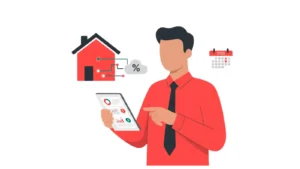Updated : Aug 20, 2025
If you’re managing vacation rentals in Italy—or planning to—2025 is a turning point. With a wave of new short-term rental laws in Italy, updated tax rules, and evolving city regulations, the short-term rental (STR) landscape has undergone one of its most dramatic shifts in recent years. But these changes don’t spell trouble; they’re an opportunity to professionalize your business, increase revenue, and build long-term trust with guests and homeowners.
In this guide, we’ll walk you through the most important updates, explain how they’re impacting the market using actual 2024–2025 performance data from PriceLabs, and show you how to turn regulation into revenue.
What are the New Short-term Rental Laws in Italy?
The Italian government has stepped in to streamline what was once a fragmented system of regional short-term rental laws in Italy.
Here’s what’s new in 2024–2025:


How Short-term Rental Laws Are Reshaping the Italian STR Market?
Rather than shrinking the market, these new laws appear to be improving performance. Let’s look at real data from PriceLabs comparing 2024–2025 vs. 2022–2023.
1. Listing Growth: A More Confident Market
One of the biggest concerns around the CIN (National Identification Code) and new compliance requirements was whether they’d push hosts out of the market. Interestingly, listing counts surged in the months leading up to the September 2024 enforcement of the CIN regulation, increasing by 9% in July and August, and by 8% in September and October compared to the previous year.
However, after CIN and new safety requirements became mandatory in September, listings dipped slightly, with May and June 2025 showing a small year-over-year decline of 3%.
This dip is likely due to smaller or non-compliant operators pausing or removing their listings in response to the stricter rules.
The good news? Listing counts have started to rebound, suggesting that property managers are adapting to the new system and that recent easing of operational restrictions (like allowing remote check-ins from May 2025) has helped restore confidence.
The takeaway: While the enforcement of new laws created short-term friction, the market is stabilizing as professional hosts embrace compliance and platforms adapt.


2. Occupancy Is Rising in the Right Places
Occupancy data paints an equally encouraging picture. The shoulder months—September, October, and April—saw the most significant increases, with up to 3% growth in October.
Why is this happening?
- The CIN code and safety requirements (like fire extinguishers and gas detectors) give guests more trust in listings.
- Legal clarity and remote check-in options (re-allowed as of May 2025) make booking easier and safer.
- The decreased number of listings during those months also prompted more occupancy for active listings.
When guests feel more confident about their stay, they book more often, especially outside the high season.


3. Booked Nights: A Boost Where It Matters
Here’s where it gets really interesting. Booked nights surged in tandem with legal reforms. October saw a 15% increase, and September was up 13%.
This suggests that the combination of safer stays, legal clarity, and streamlined booking through compliant platforms is creating more year-round demand. While summer always performs well, the new laws seem to be expanding the season into less busy months.
Notably, booked nights experienced significant growth, with increases of 15% in October, 13% in September, and 2% in April compared to the previous year.


4. RevPAR Has Jumped Too
You might expect that more listings and more bookings would drive prices down, but the opposite has happened. RevPAR rose by 20% in October, 15% in September, and 11% in June.
Why? Because properties that are legally compliant, safe, and clearly presented tend to command higher prices and attract better guests. Guests are willing to pay more when they know the host is operating above board.


PriceLabs Market Dashboard
Ready to unlock the power of data? Try PriceLabs Market Dashboards today and turn insights into action for your vacation rental success!
Try Now!What are Local Short-term Rental Laws in Italy? (City-by-City Overview)
Venice
- Annual cap on rental nights per property
Venice is among the Italian cities considering or implementing annual caps on the number of nights a property can be rented short-term, particularly in historic districts, as part of broader efforts to curb overtourism and preserve local housing. - Tighter zoning regulations in historical areas
New zoning rules are being enforced to limit short-term rentals in the historic center, aiming to reduce the impact on local residents and prevent the loss of community character. - In-person check-ins were mandated, but may ease post-court ruling
Italy imposed a nationwide ban on remote self-check-in (key boxes, lockboxes) in late 2024, requiring in-person check-ins; however, a court ruling in May 2025 has started to ease these restrictions, allowing remote check-ins again under certain conditions.
Milan
- SCIA filing is mandatory before listing
Hosts must file a SCIA (Segnalazione Certificata di Inizio Attività) with the city before listing a property for short-term rental. This is a legal prerequisite for all hosts in Milan. - CIR code still enforced (in transition to CIN)
Milan requires a CIR (Codice Identificativo di Riferimento) code for all listings, which must be displayed in advertisements. The city is transitioning to the national CIN system, but CIR remains enforced during the transition period. - Key boxes in public areas are banned
The use of key boxes and lockboxes in public spaces was banned nationwide in late 2024, with enforcement in major cities like Milan. This was later partially relaxed by a May 2025 court decision.
Rome
- Must register on the SUAR portal
Hosts in Rome are required to register their properties on the SUAR (Sportello Unico per le Attività Ricettive) portal as part of the city’s effort to monitor and regulate short-term rentals. - Hosts must manage tourist tax collection directly
In Rome, hosts are responsible for collecting and remitting the tourist tax (tassa di soggiorno) directly to the authorities, unless the platform (e.g., Airbnb) does so on their behalf. - STR zoning restrictions apply near tourist sites
There are zoning rules in Rome that restrict short-term rentals in areas close to major tourist sites, aiming to preserve residential housing and manage tourism flows.
Florence
- Building-level approval may be needed in some historic zones
In certain historic neighborhoods, building-level approval is required before a property can be used as a short-term rental, particularly in multi-unit buildings or those subject to heritage protection. - Zoning laws restrict new STRs in UNESCO areas
Florence has enacted a freeze on new short-term rental authorizations in the UNESCO-listed historic center, preventing new listings in these protected zones.
How Property Managers Can Use These Laws to Maximize Revenue?
1. Streamline Compliance to Scale Operations
The introduction of the centralized CIN (National Identification Code) system is a game-changer for multi-property operators. With each listing now officially registered with a unique code, you can maintain accurate documentation and proof of compliance for every property under management. This makes it much easier to streamline operations to stay compliant, especially when filing taxes or updating listings on platforms like Airbnb or Booking.com—where non-compliant properties risk being suspended or delisted.
Additionally, the re-legalization of remote check-ins from May 2025 significantly reduces operational burden. With smart locks, OTP verification, or biometric tools, you no longer need staff on-site for every check-in. This allows you to scale across cities or neighborhoods efficiently without inflating costs. It also opens up opportunities to offer flexible, 24/7 arrivals—perfect for catering to international guests.
2. Use Compliance as a Marketing Advantage
As more guests seek safe, trustworthy accommodations, legal compliance has become a selling point. Including your CIN registration, installed safety features (like gas detectors and fire extinguishers), and any relevant liability insurance details in your listings builds trust and sets your properties apart.
Instead of just listing amenities, highlight your compliance. For example: “Fully certified apartment with official CIN code, carbon monoxide detectors, and remote keyless entry.” Not only does this reassure cautious travelers, but it also increases your click-through rate and booking conversion, especially on platforms that now surface compliant listings more prominently.
In the context of recent occupancy and RevPAR gains (especially in months like September and October), these trust signals may be part of why travelers are booking longer stays and paying higher nightly rates.
3. Build Pricing Around Local Regulations
Cities like Venice, Florence, and Milan have introduced zoning restrictions and rental caps, meaning that not every night or every location is equal. Use these limitations to your advantage with Dynamic Pricing tools like PriceLabs.


If your property is only allowed to be rented for 120 nights a year, for instance, you can:
- Raise prices during high-demand periods (like late summer and October, when RevPAR has jumped by 15–20%)
- Block low-demand days to preserve availability for peak seasons
- Avoid penalties by syncing your calendars and ensuring you don’t exceed city-imposed thresholds
This regulatory-aware pricing strategy helps you stay profitable without breaking the law.
4. Stay Agile With Data
With new laws stabilizing the market and guests increasingly preferring professional rentals, keeping a close eye on performance metrics is more important than ever. Look beyond occupancy—track RevPAR, booked nights, booking window and average stay length to understand how regulations are impacting different seasons.
For instance, if you’re in a city that saw a drop in occupancy in May due to listing restrictions, use tools like PriceLabs to test:
- Weekend-only availability
- Value-add promotions (e.g., early check-in or airport pickup)
- Special rates for extended stays to counter fewer available rental days
Data from 2024–2025 already shows that markets responded favorably to compliance—RevPAR rose by 20% in October and booked nights increased in September by 13%. Use that momentum to build flexible, adaptive strategies that respond to demand and regulatory shifts in real time.
Guests are increasingly aware of safety and legality. Promote your CIN registration, safety devices, and insurance coverage on your listings.
Example: “Certified property with gas detectors and 24/7 remote check-in” builds instant credibility and improves click-through on platforms like Airbnb.
5. Build Pricing Around Local Regulations
If your city has a cap on rental days or limits in certain zones, adjust your calendar and pricing strategy accordingly. Use tools like PriceLabs to increase rates during allowed dates and close availability in non-compliant zones.
This keeps you profitable while staying within the law.
6. Stay Agile With Data
Track your occupancy, RevPAR, and guest reviews monthly. For example, if you’re seeing lower occupancy in February, test weekend discounts or value-added services like airport pickup to boost bookings.
Use market data from platforms like PriceLabs to benchmark your performance.
Conclusion
Italy’s new short-term rental laws are not a barrier—they’re a blueprint for running a professional, high-performing rental business. Property managers who embrace regulations, stay up to date with local laws, and adopt data-driven strategies will thrive in this new landscape.
If 2024 was the year of transition, 2025 is the year of opportunity.







